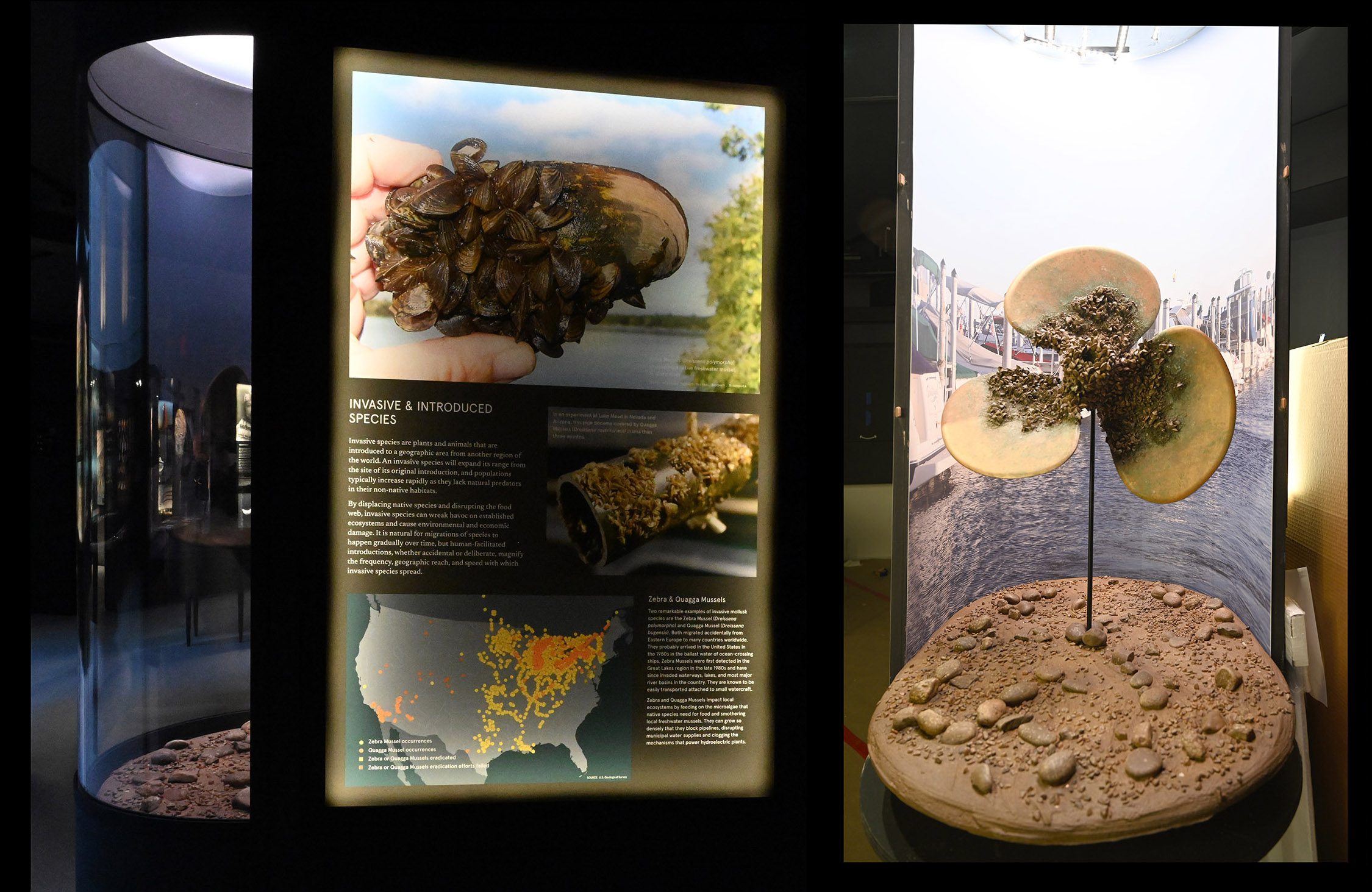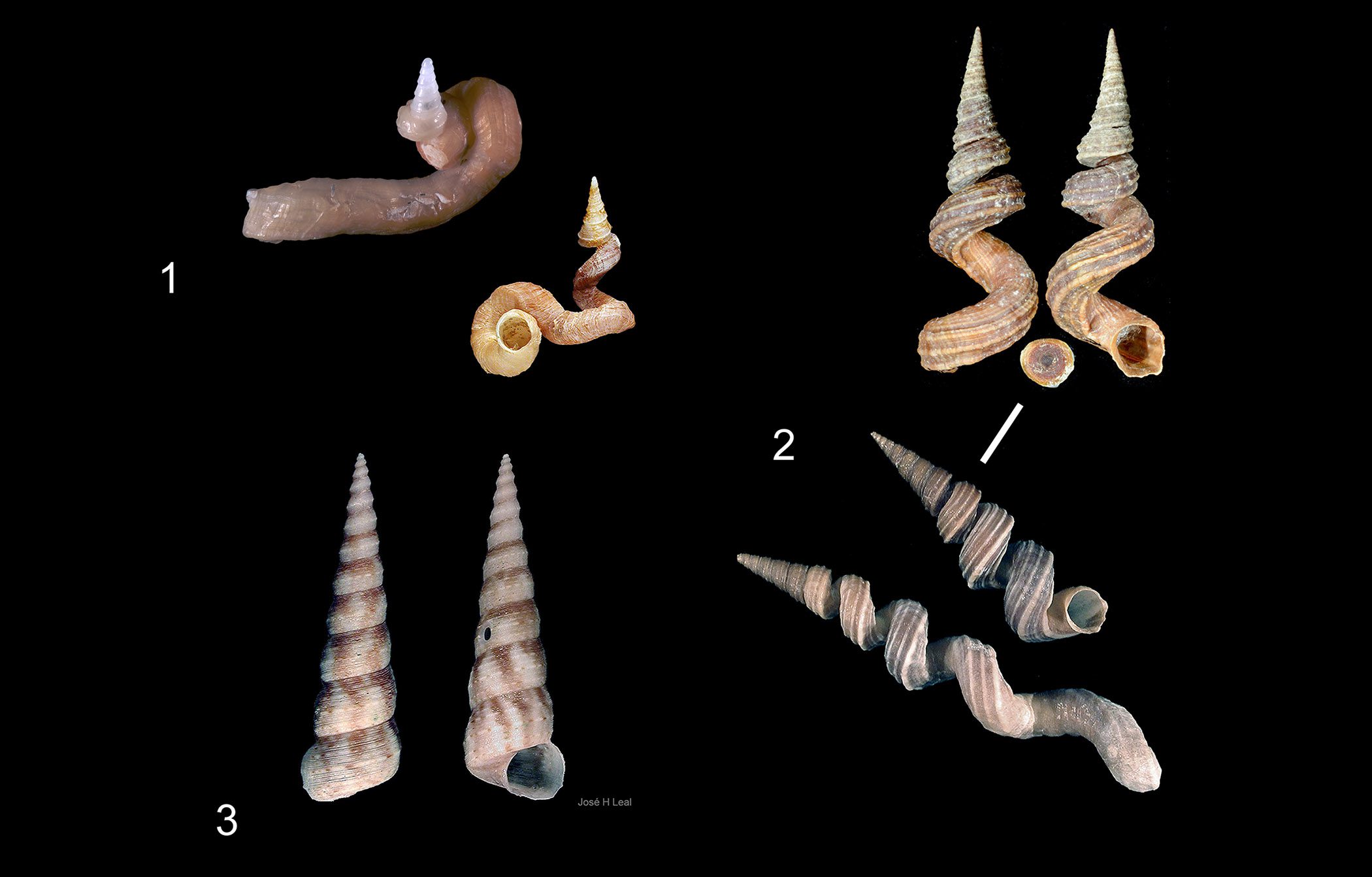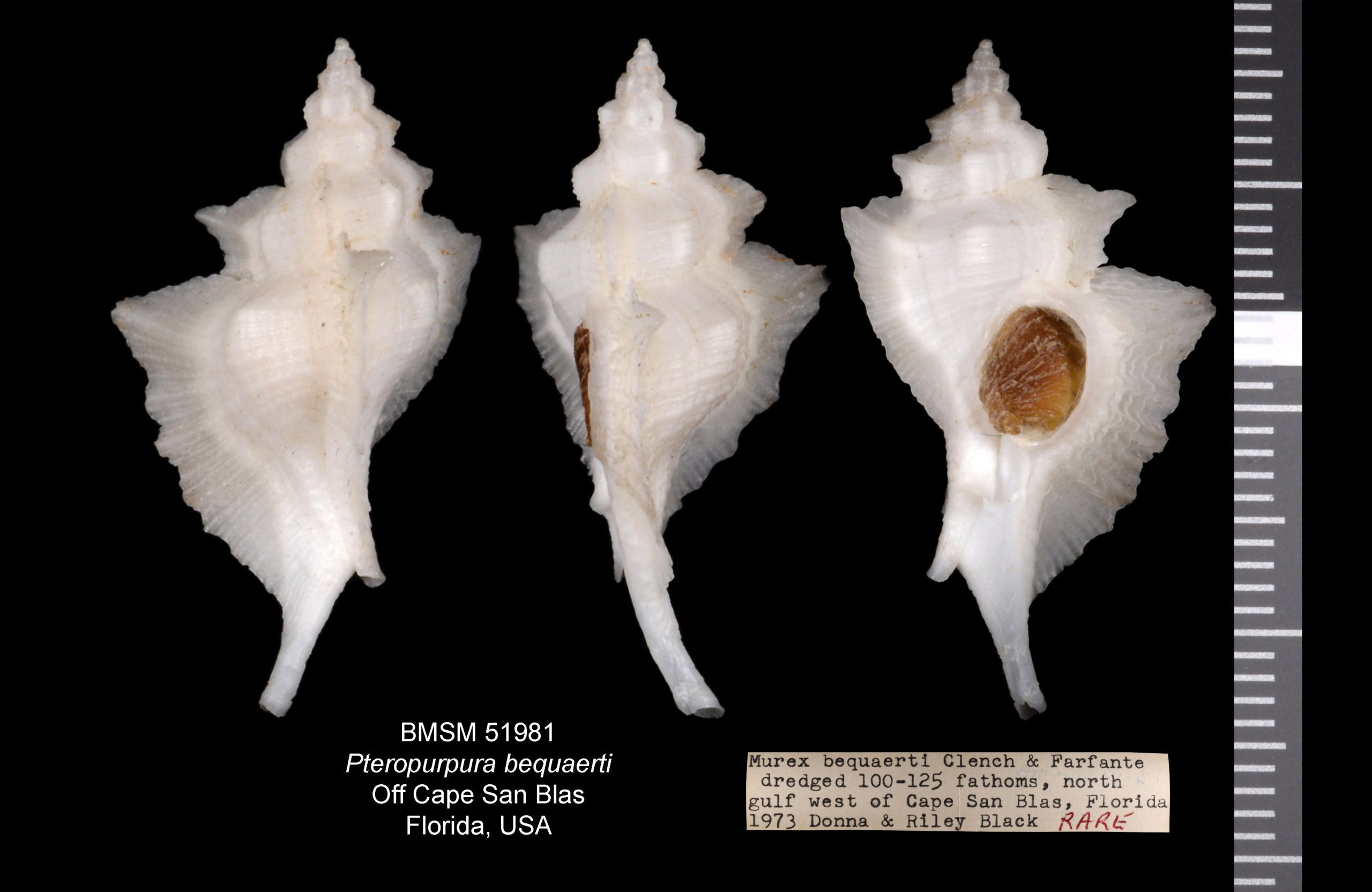A couple of weeks ago, underwater photographer Linda Ianiello posted a couple of images in Facebook’s Blackwater Photo Group asking for help with the identification of a veliger larva of a gastropod that she recently photographed in one of her “blackwater” dives*. Veliger larvae are typical of mollusks, and characteristically have the doubled-up, long, paired expansions called velar lobes.
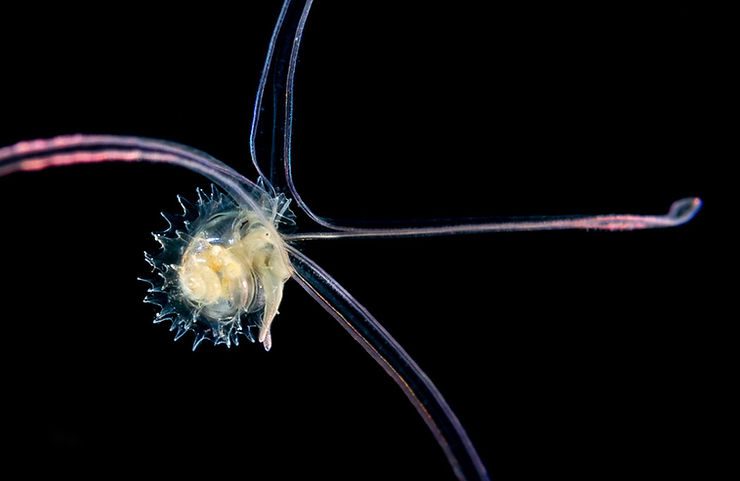 Distorsio clathrata, veliger larva from off Palm Beach County, Florida. Photo by Linda Ianiello.
Distorsio clathrata, veliger larva from off Palm Beach County, Florida. Photo by Linda Ianiello.
Those expansions allow the larvae to move daintily in the water, and bear tiny hair-like cilia that create miniature water currents that bring micro-algae to the larva’s mouth for feeding. Linda’s photo rang a bell, bringing memories of a drawing I had seen many years ago in a paper on larval gastropods by Danish marine biologist Dan Laursen**.
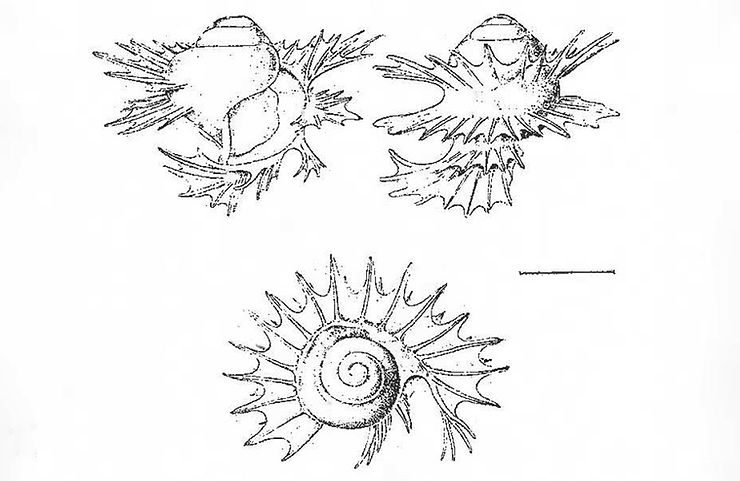 Larval shell of Distorsio clathrata, from Figure 42 in Laursen (1981).
Larval shell of Distorsio clathrata, from Figure 42 in Laursen (1981).
A comparison of Linda’s photo with the drawings in Laursen’s paper confirmed that the larva in her photos most likely was of an Atlantic Distorsio, Distorsio clathrata. The unique translucent structure on the larval shell are expansions of the outer shell layer, the periostracum, which look like the webbed hands and feet of the “Creature from the Black Lagoon!”
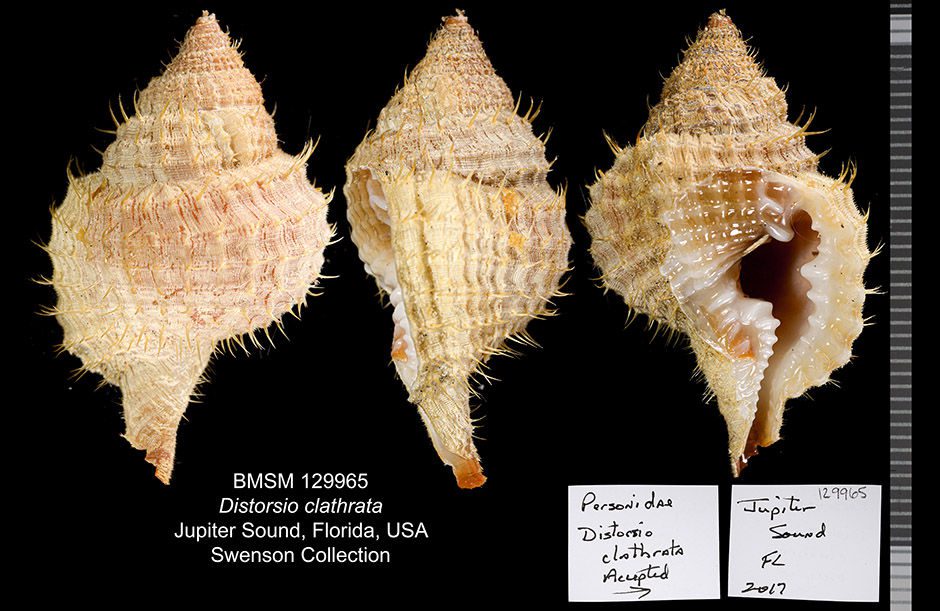 Distorsio clathrata, adult shell from Jupiter Sound, Florida.
Distorsio clathrata, adult shell from Jupiter Sound, Florida.
*Linda Ianiello and Susan Mears’s photographs can be seen in the Museum exhibit Blackwater Moments: Nocturnal Photography of Open-ocean Mollusks.
**Laursen, D. 1981. Taxonomy and distribution of teleplanic prosobranch larvae in the North Atlantic. Dana Report 89: 44 pp, 3 pls.
